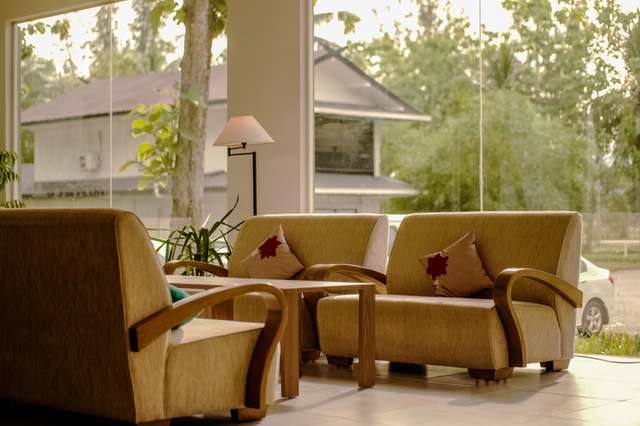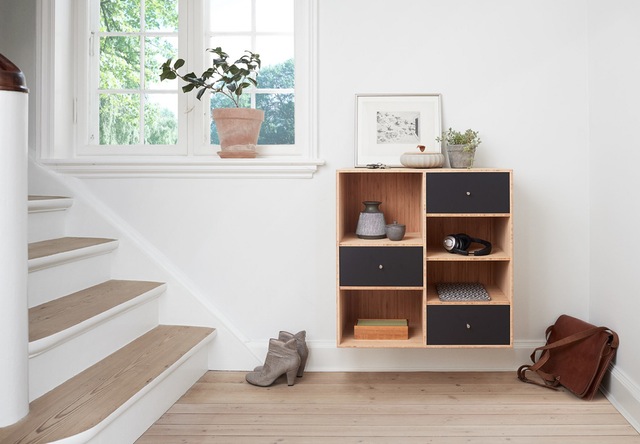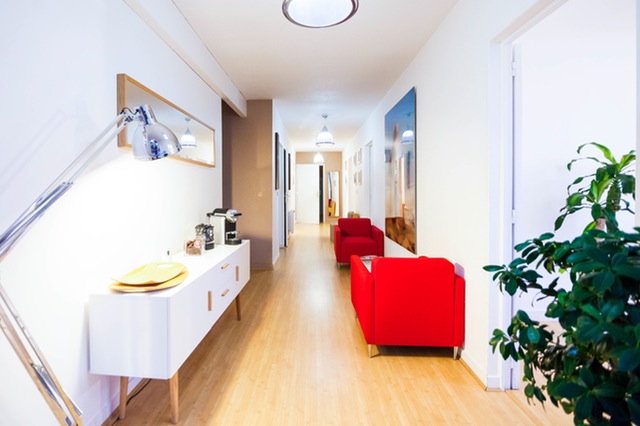There are few things in life more exciting than buying a first home, but it’s also a huge step in terms of financial outgoings. It’s one of the biggest decisions a family can make and it takes time to work out exactly what all the financial implications are. Sure, the purchase process can be stressful but when it’s all completed, it’s incredibly rewarding.
Then, of course, the home has to be furnished. There will be bare walls, bare floors and bare windows (unless there has been an agreement for the previous owner to leave in some soft furnishings), but in the end, everyone wants to create their own space and ambience. The family needs to feel the home belongs to them, not just in terms of owning the bricks and mortar, but that it has been lovingly furnished and becomes a unique place to live in.
Planning the decorating
The chances are that after buying the home the family budget will be rather depleted. Much as one might want to push out the boat for decorating, it’s not always possible, but it doesn’t have to cost a fortune to make a home’s interior design attractive and a comfortable place to be. A simple and cheap way to start off is by choosing neutral tones; white, cream or magnolia for walls and white, black and timber tones for furniture. It doesn’t have to be considered for every room, but neutral tones can be spiced up inexpensively with splashes of color, such as cushions or floor rugs, or even some interesting antiques placed in spaces you wish to draw attention to. It’s probably worth spending a little extra on good quality, hardwearing paint so there is less need to touch up or redecorate too soon – that will only cost more money.
Make lists
It’s horribly easy to go into a store, either in a mall or online, and be attracted by the many items available. Impulse buying will not save money – it’s more liable to completely break the budget – so, boring as it may seem, it’s a good plan to make lists. A family moving from a rental apartment, for example, will have a number of items that are likely to work well in the new home, so by making a list of these as well as furnishings to add should prevent a massive and unplanned exodus of money. Borrowing money for furnishings is fine, provided that the cost of repayments is very carefully factored in to ongoing budgets. If something is unaffordable at the time then add it to a wish list for the future and plan to save up for it.
Window coverings
Uncovered windows mean that privacy and insulation is lost, so window coverings should be an absolute priority for a new home. Even if the home is double-glazed – or even triple-glazed – heat will be lost if the windows are not covered effectively. There are several options to choose from and it will depend on personal preference. Plantation shutters are an effective way of controlling the light in rooms and to give additional insulation when fully closed. Light coming in can be increased or decreased with movable slats, and in a hot climate, the sun can be partially or fully blocked to prevent rooms overheating. Shutters can be made to fit any size or shape of window and are available in a range of materials, with wood being a popular choice. Color schemes for shutters can match the rest of the interior design; they are hardwearing and stylish and can add value to a home when it’s time to move on.
Curtains and blinds are other options to be considered. Both have vast ranges of designs and color schemes and don’t have to be particularly expensive. It’s always worth asking family and friends if they have any spare curtains tucked away. If so, they can be used as temporary window coverings at little or no expense until new ones can be afforded. Blinds do need to be made to measure but they can be attractive without breaking the bank. The secret is to do research and look for special offers and bargains, especially if a store is coming to the end of a line.
Carpets, rugs and tiles
Some rooms need carpets and some don’t. If there is an attractive wooden floor with a really nice grain, it would be a shame to cover it up completely. A bit of sanding and varnishing coupled with a stylish rug will remove the need for an expensive carpet. Rugs can add a fashionable touch to a room, and with innumerable designs and colors to choose from, there will always be something that will work and make a statement.
Bedrooms and living rooms may need carpets, and it’s worth getting hardwearing ones for areas that have a lot of traffic. For bedrooms, there are options for relatively inexpensive coverings that will be attractive but don’t need the additional outlay to cope with constant heavy use.
Floor tiles for bathrooms, rest rooms and kitchens not only look good but are easy to keep clean. Whether it’s mopping up water or spills from the cooker, they are hardwearing and therefore cost-effective.
Furniture
The chances are that some furniture will be moving from the previous home and it’s worth taking stock of exactly what else is necessary once the move into the new home has been completed. Assessing one room at a time and seeing how current furniture fits will help to get a handle on what can stay, what can go, and what will replace what has gone. If the budget is tight, then thrift stores often have very serviceable furniture, such as beds and chairs, that will do the job until the budget allows getting some new items in.
Be patient
A new home is a delight, and planning how to decorate and furnish it is an ongoing project. If it can’t be done at once, then planning how it will evolve while keeping an eye on the costs is something everyone can do.



